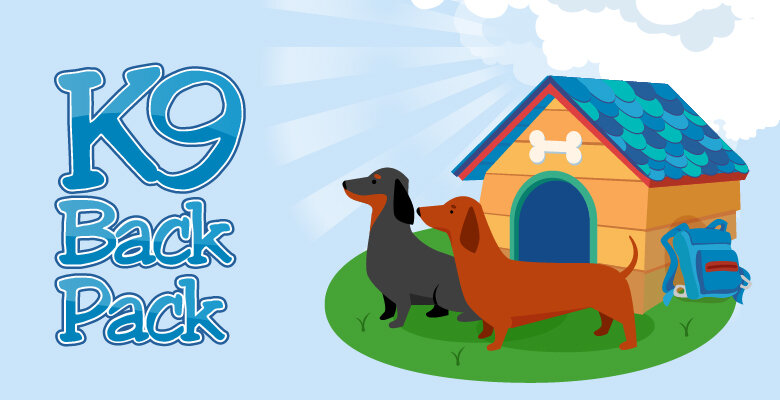IVDD - Basic Info
Dachshunds, Beagles, Basset Hounds, Pugs, Pekigneses, Chihuahuas, Shih Tzus, JTRs, Mini Poodles, Mini Pinchers, Bichons, Cocker Spaniels - along with other breeds - are prone to disc herniation caused by a condition called Intervertebral Disc Disease (IVDD).
IVDD causes the discs to age faster than normal. This means that young dogs, about 3 to 8 years old, could be prone to disc herniations in the back or the neck. IVDD dogs don’t need to have a big trauma to get a herniation. A jump or a bit of impact could cause the disc to rip open and ooze disc material out into the spinal cord.
To help minimize the impact of a disc herniation, it is important that you:
Keep your dog fit and lean. Extra weight adds stress to the back and could make healing a bit more difficult.
Teach your dog to be comfortable in a crate or den from the day you acquire the dog or puppy. Healing from a disc herniation requires strict bed rest for several weeks; the more comfortable your dog is in its den, the easier the process will be for the whole family. Positive reinforcement is key!
Use a harness instead of a collar to avoid pressure on the neck.
Teach your dog to have all 4 on the floor: Use ramps for furniture; avoid jumps and steps.
Good and very complete crate training information
Some of the symptoms that could be seen during a disc herniation are:
A tight tummy, walking slower than usual, holding a paw up, yelping, pain (shivering, doesn’t want to move), an arched back, could be symptoms of an early disc herniation, or “bulging disc”.
Limping, walking drunk, or dragging its legs are signs that a possible disc herniation is more advanced.
If the dog has a possible neck herniation, its head might be held in an odd position: low to the ground, stiff, or it might even hold the neck back.
If your dog shows one or more of the symptoms above, you should:
Go to the vet
Don’t give ANY medicine. Call the vet’s office and tell them you are on your way.
Pick your dog up, carefully supporting the front and rear horizontally, put your dog in a protective pet carrier or crate for the car and take it to the vet.
IF you can’t get to a vet immediately, put the dog in a crate, pet carrier, or block off a small area so it can’t move around anymore than to turn around comfortably and stretch out fully. Call and get into the vet as quickly as possible.
If you acquired your pet from a breeder or rescue, contact them as soon as you get back from the vet. They might be able to offer some advice or support.
Read and learn all you can about the condition and treatment options. Read our articles and share them with household members so the whole family is informed.
We know that any disease our pets have is scary, but we want you to know that THERE IS HOPE! Your dog CAN HEAL and live a long and happy life.

